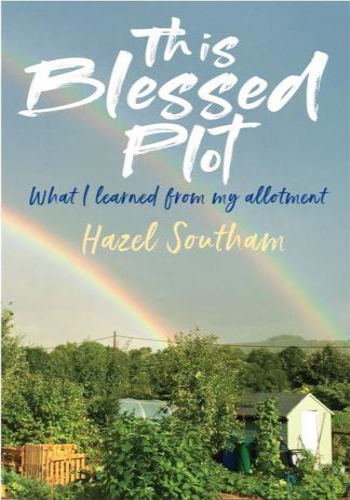Chapter 1: Introduction
In this chapter, the author Toby Hemenway introduces the concept of "permaculture" and its fundamental principles. He explains that permaculture is more than just a gardening technique, it is a holistic approach towards designing sustainable and self-sufficient systems. The chapter starts with the history of permaculture and its origins in Australia, along with the key figures who pioneered its development. Hemenway also outlines the three main ethics of permaculture: care for the earth, care for people, and fair share. He emphasizes the importance of integrating these ethics in our daily lives to create a balanced and sustainable future.
Real-life example: A group of residents in a small town in Vermont came together to create a community garden using permaculture principles. They transformed an abandoned lot in the town into a thriving garden, producing food for local residents while also educating the community on permaculture principles. The garden not only provided a source of fresh, organic food but also brought the community closer together and helped to build a more sustainable and resilient neighborhood.
Chapter 2: The Living Soil
This chapter focuses on the importance of healthy soil and how it is the foundation of a successful permaculture garden. Hemenway explains the role of soil organisms and how they contribute to creating healthy, nutrient-rich soil. He also discusses the different types of soil and their characteristics, along with ways to improve soil health through techniques such as composting, mulching, and cover cropping.
Real-life example: In India, the organization Navdanya has been working to promote organic farming using permaculture principles. One of their initiatives is the establishment of community seed banks to preserve traditional and indigenous seed varieties. They also conduct training programs for farmers on composting and mulching techniques, which have led to increased soil fertility and reduced dependence on chemical fertilizers.
Chapter 3: Water
In this chapter, Hemenway discusses the importance of water in the permaculture system and ways to efficiently manage and conserve it. He explains various water harvesting techniques such as swales, berms, and rain gardens that help to retain water and prevent erosion. The author also emphasizes the importance of using graywater and how it can be effectively utilized in the garden.
Real-life example: In the semi-arid regions of Kenya, farmers have been using permaculture techniques to harvest and store rainwater. By creating small dams and swales, they are able to capture and store rainwater, reducing their dependence on erratic rainfall patterns. This has led to an increase in crop yields and has also created a source of water for livestock.
Chapter 4: Trees and Forests
This chapter delves into the role of trees and forests in a permaculture garden. Hemenway explains how they form an important part of the ecosystem, providing a range of benefits such as shade, windbreaks, and food. He also discusses the concept of "food forests" and how to imitate natural forest systems in creating a diverse and productive garden.
Real-life example: The village of Humla in Nepal has used permaculture techniques to transform barren land into a lush forest garden. By planting a diverse range of trees and shrubs, they have been able to create a self-sufficient system that provides food, shelter, and medicine for the community. The forest has also helped to improve the local climate and soil quality, making the land more productive.
Chapter 5: The Buffer Zone
This chapter focuses on the outer edges of a permaculture garden and how they can be utilized to create a protective "buffer zone." Hemenway explains the importance of having a diverse mix of plants and animals in this area to provide a habitat for beneficial insects, birds, and other wildlife. He also discusses the role of natural pest management and ways to reduce the use of harmful chemicals in the garden.
Real-life example: In the Andes Mountains, farmers have been using a traditional practice called "chakras" to create a buffer zone around their crops. They plant a wide variety of crops along the edges of their fields, creating a diverse ecosystem that attracts beneficial insects and deters pests. This has helped to reduce the need for pesticides, resulting in healthier crops and a safer environment for farmers.
Chapter 6: Cycles, Flow, and Energy
In this chapter, Hemenway explains the importance of understanding natural cycles and flows in creating a sustainable permaculture system. He discusses the energy flow in a garden, from the sun to the plants and animals, and explains how to design a system that maximizes this energy flow. He also discusses the importance of closed-loop systems and how to reduce waste in the garden.
Real-life example: The Dutch city of Nijmegen has implemented a biomimicry approach in designing its water management system. Inspired by the natural cycles and flows of the nearby river, they have created an innovative system that collects rainwater, purifies it, and uses it for various purposes in the city. This has helped to reduce the city's dependence on energy-intensive water treatment plants and has created a more efficient and sustainable water system.
Chapter 7: Getting Started
The final chapter of the book provides practical guidance on how to get started with creating a permaculture garden. Hemenway emphasizes the importance of observation and planning in designing a successful garden. He also provides a checklist for selecting plants and strategies for maintaining the garden in the long run.
Real-life example: In Australia, Costa Georgiadis, a landscape architect and host of the TV show "Gardening Australia," has been educating and inspiring people to start their own permaculture gardens. Through his own garden, he demonstrates how to use permaculture principles to create a sustainable and productive system. In addition, he conducts workshops and community events to encourage more people to get involved in permaculture gardening.







